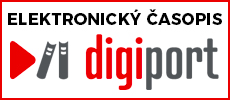ChatDansk leverages AI-driven adaptability to cater to a diverse array of learning styles, making Danish language acquisition accessible and engaging for all types of learners. Language learning can vary greatly in effectiveness depending on how well it aligns with each learner’s unique style—be it visual, auditory, kinesthetic, or reading/writing. By integrating flexible, responsive approaches, ChatDansk helps every learner achieve their goals at their own pace and in a format that resonates with them.
1. Visual Learners
For visual learners who thrive on visual information like diagrams, images, and structured layouts, Chat GPT Dansk uses a variety of graphic aids and visualizations to teach vocabulary, grammar, and context. The platform’s lessons are often accompanied by images, icons, and interactive elements that help reinforce memory through visualization. For example, vocabulary lists include images to represent the words, helping learners form associations between terms and their meanings. Grammar concepts are broken down into charts or highlighted with color coding, making it easier for visual learners to process the information.
2. Auditory Learners
Auditory learners benefit from listening to information, such as through conversations, lectures, and discussions. To meet the needs of these learners, ChatDansk incorporates extensive audio content, including pronunciation guides, dialogue practice, and listening exercises. Users can listen to native Danish speakers and repeat phrases to get a feel for the rhythm and intonation of the language. Real-time feedback on pronunciation allows auditory learners to refine their skills through a process of listening and emulating. Additionally, ChatDansk’s conversation simulations and listening comprehension exercises enable users to practice understanding spoken Danish in various contexts, strengthening their auditory retention.
3. Kinesthetic Learners
Kinesthetic learners, who grasp concepts best through hands-on activities and physical engagement, benefit from ChatDansk’s interactive exercises. For these learners, ChatDansk offers activities like drag-and-drop exercises, scenario-based simulations, and conversation role-play tasks. By "doing" rather than just "observing," kinesthetic learners can engage directly with the language. For instance, they may arrange sentences in the correct order, match phrases with corresponding images, or practice conversational responses in different settings. These interactive components transform language learning into an active experience, helping kinesthetic learners feel more connected to the material.
4. Reading/Writing Learners
Those who learn best through reading and writing benefit from ChatDansk’s structured lessons and written exercises. The platform provides extensive reading materials, written quizzes, and vocabulary tests designed for reading/writing learners. Users can engage in exercises like filling in the blanks, translating sentences, or writing responses to prompts, which reinforce language acquisition through written practice. Additionally, ChatDansk’s vocabulary lists, grammar explanations, and cultural notes are accessible in written form, catering to learners who prefer processing and retaining information through reading.
5. Combining Learning Styles for a Holistic Approach
Many learners don’t fit into just one style; they benefit from a mix of visual, auditory, kinesthetic, and reading/writing techniques. ChatDansk’s design incorporates a variety of resources and approaches, allowing learners to explore different modes and combine them in a way that feels natural. For instance, a user might start with a written vocabulary list, then listen to the pronunciation of each word, and finally practice using the words in a role-play activity. By blending learning styles, ChatDansk not only helps users find what works best for them but also builds a more well-rounded skill set.
6. Real-Time Adaptability and Personalization
One of ChatDansk’s standout features is its adaptive learning technology. The platform uses AI to monitor a user’s progress and adjust content based on their strengths, weaknesses, and preferred learning style. For example, if a user excels at auditory exercises but struggles with written ones, ChatDansk will introduce more written activities to balance their proficiency. This adaptability means that every learner receives a customized experience, helping them overcome specific challenges and build confidence in their language skills.
7. Building Confidence and Motivation through Personalized Learning
ChatDansk’s personalized approach also enhances motivation by allowing users to set goals that align with their individual learning styles and preferences. Progress tracking and achievement badges give users a sense of accomplishment and encourage consistent practice. Knowing that each lesson is tailored to their abilities, learners are more likely to stay engaged and confident in their progress. ChatDansk’s supportive, personalized environment transforms language learning from a generic task into a personal journey, helping users reach fluency in a way that feels achievable and enjoyable.
Conclusion
ChatDansk’s commitment to adapting to different learning styles reflects a deep understanding of how diverse the language learning process can be. By providing resources that cater to visual, auditory, kinesthetic, and reading/writing learners—and blending these elements for a comprehensive approach—ChatDansk creates an inclusive platform that meets each user’s unique needs. Its AI-powered adaptability ensures that every lesson evolves with the learner, enhancing retention, building confidence, and ultimately making Danish language acquisition more accessible and enjoyable. Whether for beginners or advanced learners, ChatDansk’s personalized approach empowers users to engage with Danish in a way that resonates with them, setting a new standard for effective and adaptive language learning.



